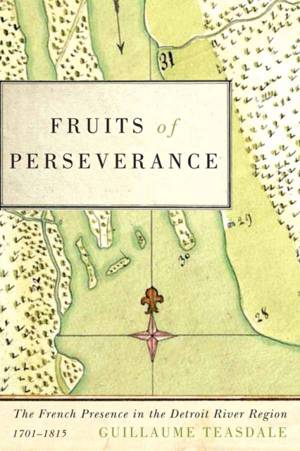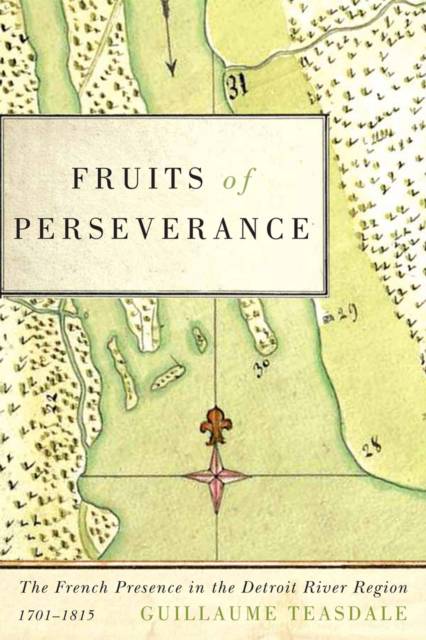
- Afhalen na 1 uur in een winkel met voorraad
- Gratis thuislevering in België vanaf € 30
- Ruim aanbod met 7 miljoen producten
- Afhalen na 1 uur in een winkel met voorraad
- Gratis thuislevering in België vanaf € 30
- Ruim aanbod met 7 miljoen producten
Zoeken
Fruits of Perseverance
The French Presence in the Detroit River Region, 1701-1815 Volume 4
Guillaume Teasdale
€ 177,45
+ 354 punten
Uitvoering
Omschrijving
Founded by French military entrepreneur Antoine Laumet de Lamothe Cadillac in 1701, colonial Detroit was occupied by thousands of French settlers who established deep roots on both sides of the river. The city's unmistakable French past, however, has been long neglected in the historiography of New France and French North America. Exploring the French colonial presence in Detroit, from its establishment to its dissolution in the early nineteenth century, Fruits of Perseverance explains how a society similar to the rural settlements of the Saint Lawrence valley developed in an isolated place and how it survived well beyond the fall of New France. As Guillaume Teasdale describes, between the 1730s and 1750s, French authorities played a significant role in promoting land occupation along the Detroit River by encouraging settlers to plant orchards and build farms and windmills. After New France's defeat in 1763, these settlers found themselves living under the British flag in an Aboriginal world shortly before the newly independent United States began its expansion west. Fruits of Perseverance offers a window into the development of a French community in the borderlands of New France, whose heritage is still celebrated today by tens of thousands of residents of southwest Ontario and southeast Michigan.
Specificaties
Betrokkenen
- Auteur(s):
- Uitgeverij:
Inhoud
- Aantal bladzijden:
- 240
- Taal:
- Engels
- Reeks:
- Reeksnummer:
- nr. 4
Eigenschappen
- Productcode (EAN):
- 9780773555006
- Verschijningsdatum:
- 15/02/2019
- Uitvoering:
- Hardcover
- Formaat:
- Genaaid
- Afmetingen:
- 152 mm x 229 mm
- Gewicht:
- 430 g

Alleen bij Standaard Boekhandel
+ 354 punten op je klantenkaart van Standaard Boekhandel
Beoordelingen
We publiceren alleen reviews die voldoen aan de voorwaarden voor reviews. Bekijk onze voorwaarden voor reviews.











